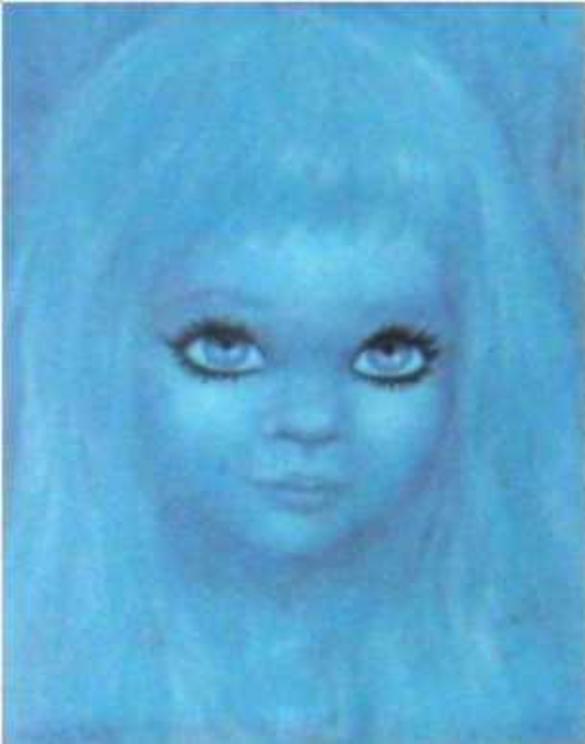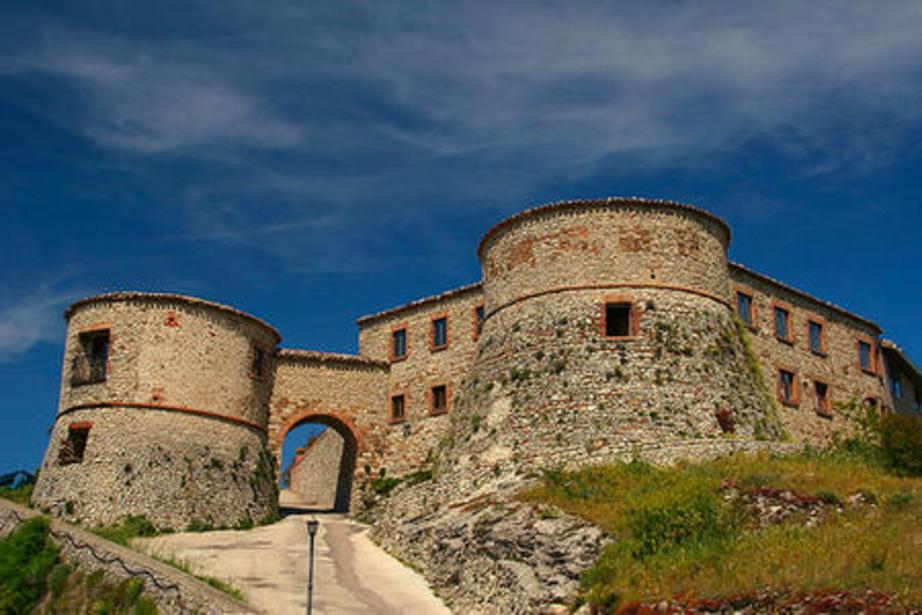The albino ghost of Montebello Castle
“Azzurrina”, an Italian word meaning “little blue”, is the nickname of a young girl who’s said to haunt the Castle of Montebello in Emilia-Romagna, Italy. According to legend, Azzurrina was born Guendalina Malatesta, the daughter of a 14th century nobleman.

Unlike the rest of her dark-haired family, Guendalina was an albino who had white hair and pale skin. Since albinos were widely feared and hated during the time, Guendalina’s mother tried dyeing her daughter’s hair black. The herbs she used didn’t work very well, however, and instead gave Guendalina’s hair a bluish tint, hence her nickname Azzurrina.
Because of her condition, Azzurrina’s parents were very protective of her. They kept her in the castle at all times, where she was guarded by two men, Domenico and Ruggero. As the story goes, there was a big storm on June 21, 1375. That night, Azzurrina was playing with a rag ball in a room in the castle. While Domenico and Ruggero were standing off somewhere else, they suddenly heard Azzurrina let out a terrible scream. The two guards then rushed to her room, but found no trace of the girl or the ball. Although they searched all over the castle and its grounds, nobody ever found Azzurrina’s body. It was as though she had vanished into thin air.

The area in Montebello Castle where Azzurrina disappeared.
One variant of the story says that Azzurrina had accidentally thrown her ball down into a open cellar where ice was stored. Another version claims that some invisible force grabbed the ball out of her hands and rolled it down into the cellar by itself. Regardless of what exactly happened, Azzurrina’s body and ball were never found. Her father, who was away in a battle during the time, had Domenico and Ruggero executed after he found out what happened. On the fifth anniversary of her disappearance, Azzurrina returned to the castle as a ghost. She has since re-appeared every five years.
Azzurrina’s bizarre story was passed down as an oral legend for more than 250 years before somebody decided to write it down. In 1620, it was recorded by a parish priest in a book about local legends and folklore. No copy of this book has survived to modern times, and some believe that the book might not exist at all. There is, in fact, no evidence that the story ever happened. Unless that priest’s book ever turns up, it wouldn’t be too far of a stretch to doubt that Azzurrina’s story originated as an authentic medieval legend either. Some have traced the appearance of the story only as far back as the 20th century.

A picture of Montebello Castle.
Still, whatever its lack of authenticity, psychics and TV producers know a good ghost story when they hear one. On the anniversary of Azzurrina’s disappearance in 1990 and 1995, television crews allegedly captured the voice of a crying little girl on their recording equipment. In 2000, the child’s voice was heard again, this time crying and possibly calling for her mamma. A 2005 recording captured a single voice saying the name “Alosio”, and a group of voices chanting an old Hebrew word for the devil, “belial”. Another investigation in 2010 apparently captured nothing.
I’m not sure whether anybody tried recording Azzurrina on June 21, 2015, but Rimini Today posted a pretty interesting article about the case the day before the anniversary that year. According to Leo Farinelli, a man who spent 20 years researching the story and contacting Azzurrina through psychics, Guendalina was actually born in 1375 to Uguccione Della Faggiola and Costanza Malatesta. She was not actually albino, but blonde-haired and Nordic-looking. This made Uguccione suspect that the girl wasn’t his. Although Costanza insisted that she never cheated on her husband, there was a blonde-haired French guard in the castle who resembled Azzurrina. At the age of 8, Azzurrina disappeared from the castle in December 1383.
If Farinelli’s research is correct, perhaps the story got twisted and spiced up a bit over the hundreds of years it was passed down. The albino element, which Farinelli claimed was added by the priest who allegedly wrote the story down in 1620, might have covered up the real cause of Azzurrina’s disappearance: murder. Some have suggested that the palace guard was Azzurrina’s real father, and Uguccione arranged for her to “disappear” to save himself embarrassment. For those curious enough to investigate the story themselves, Montebello Castle is open to visitors for a slight fee nearly all-year round.

